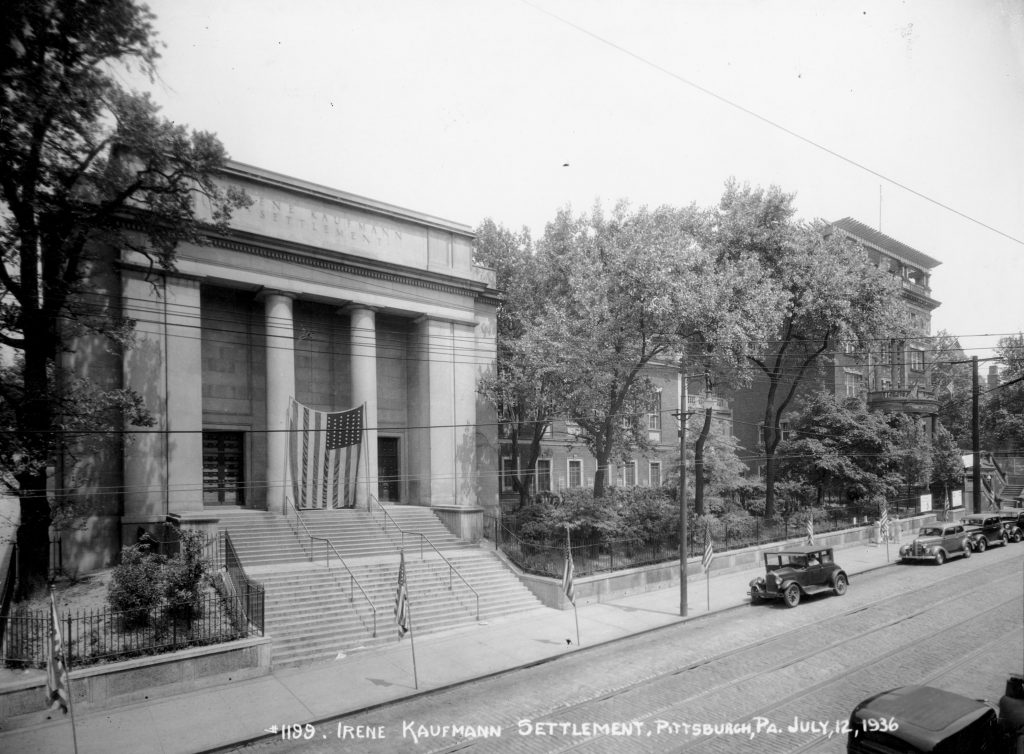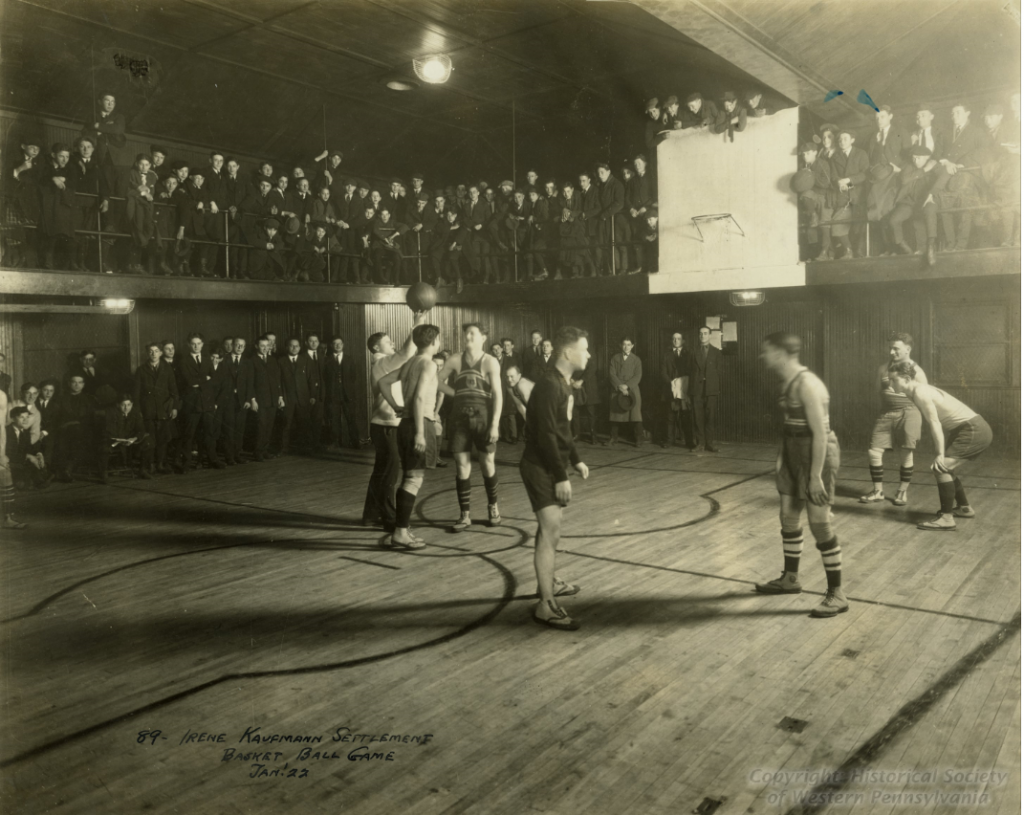By Amanda Finney
April 2021
Now known as the Elsie Hillman Auditorium, the Irene Kaufmann Settlement House Auditorium is the last existing building of the Irene Kaufmann Settlement House (IKS). The IKS was a massive hub for Pittsburgh immigrants from the late 1800s to the first half of the 1900s, and it played a particularly integral and impressive role in assisting Jewish immigrants at the time.

Throughout the nineteenth and early twentieth centuries, settlement houses were common community organizations that provided support for the urban poor. They often contributed a wide range of services, such as education, medical services, employment resources, and nutrition programs. Programs like these were often instrumental in helping European immigrants to settle into and thrive in American culture; however, while these settlement houses provided much needed resources to European immigrants, they sometimes patronized new immigrants and frequently forced assimilation onto them.
The IKS was Pittsburgh’s largest settlement, maintaining 60 staff members and 100 volunteers in 1929 with main building that held 67 rooms. Built in the center of the Hill District, the IKS opened in 1909 to help Jewish immigrants in Pittsburgh assimilate into American life. The organization provided free English classes for immigrants and offered job placement services to assist with the initial transition. The course offerings, such as English classes, were in high demand. In 1921, more than 300 immigrants took night classes at the IKS.

Throughout the years, the IKS grew to expand its services significantly; it provided immigrants with a wealth of resources to enhance their lives in the US, including a kindergarten, a banking service, a library, a bath house, music lessons, and elective class offerings, like photography. The IKS even provided families with milk for their children at their “Better Baby” clinic. They also created the Pittsburgh Visiting Nurses Association, where nurses would make home visits to Pittsburgh immigrants to ensure their good health. Likewise, the IKS eventually expanded its services even further and built the IKS auditorium. The auditorium was a highly popular attraction, offering an indoor gymnasium that hosted sports summer camps and several sports teams. The auditorium accommodated a large number of people and allowed for sports activities to be held in the winter, further impacting the reach of the IKS. Overall, the IKS and the IKS auditorium served as a robust cultural hub for Jewish immigrants to gather, socialize, receive services, and enrich themselves.
In 2011, ACH Clear Pathways renovated the building and renamed it the Elsie Hillman Auditorium. A state-of-the-art venue, the auditorium boasts 550 seats and is now used for many different events like concerts, recitals, performances, film screenings, and more. Though it is no longer the IKS, the auditorium continues the tradition of bringing the community together–this time through the arts.
Featured Image
“Students in Music School at Irene Kaufmann Settlement,” Historic Pittsburgh. Students taking music lessons at the Irene Kaufmann Settlement.
Further Reading
Abels, Pamela J. “Paths to Americanization: Jewish Voices from Pittsburgh.” Central European University, 2012.
Baron, Albert H N. “The Settlement and the Community.” The Jewish Criterion, 22 Sept. 1911, pp. 5–6.
Fleming, George T. Pittsburgh, How to See It: a Complete, Reliable Guide Book with Illustrations, the Latest Map. . . and Complete Index (Classic Reprint). Forgotten Books, 2015, pp. 248–249.
Power, Edward M. “Our Wonder of the Hill District.” The Hill District: Organizations: Irene Kaufmann Settlement, www.info-ren.org/projects/btul/exhibit/neighborhoods/hill/hill_n71.html.
How to Cite
MLA: Finney, Amanda. “Irene Kaufmann Settlement Auditorium.” ReligYinz: Mapping Religious Pittsburgh, University of Pittsburgh, August 10, 2021, religyinz.pitt.edu/Irene-Kaufmann-Settlement-Auditorium/.
APA: Finney, A. (2021, August 10.) Irene kaufmann settlement auditorium. ReligYinz: Mapping Religious Pittsburgh, University of Pittsburgh. https://religyinz.pitt.edu/Irene-Kaufmann-Settlement-Auditorium/
Chicago: Finney, Amanda. “Irene Kaufmann Settlement Auditorium”. ReligYinz: Mapping Religious Pittsburgh. University of Pittsburgh, August 10, 2021. https://religyinz.pitt.edu/Irene-Kaufmann-Settlement-Auditorium/
